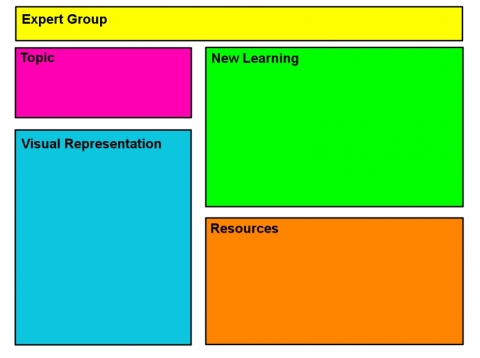Collaborative Learning

Collaborative learning (SDI Productions, iStockphoto)

Collaborative learning (SDI Productions, iStockphoto)
Format
How does this align with my curriculum?
PE
5
Integrated Curriculum Grade 5: Science (Draft 2023)
IS 1.4: Collaborating with others effectively can help us to share meaningful explorations in impactful ways.
PE
6
Integrated Curriculum Grade 6: Science (Draft 2023)
IS 1.4: Collaborating with others effectively can help us to share meaningful explorations in impactful ways.
PE
6
Integrated Curriculum Grade 6: Science (Draft 2023)
IS 1.4: Effectively communicate the results of their inquiry.
Collaborative learning is an approach to learning and teaching in which a group of students work together to achieve a common goal (e.g., to solve a problem, meet a challenge, answer a question, share learning). Collaborative learning requires a learning environment that is fluid and inclusive, and that supports independence and interdependence of students with each other and with the educator.
Why use it?
- To maximize learning for all students.
- To help students recognize and acknowledge the knowledge and skills of others that may be different from their own.
- To respect the ideas and contributions of others
- To develop individual and group accountability to complete a task or solve a problem.
- To learn how to share materials, take turns and complete a common task as part of a group.
- To develop and enhance social skills through collaborative interactions with his/her peers.
Tips for success
- Establish a collaborative mindset in your classroom. A collaborative mindset supports the development of a growth mindset. Students are more engaged in their learning when their voice is heard and their thoughts, ideas and opinions are respected.
- Promote positive interdependence among students by providing frequent reinforcement of positive interactions and collaboration (e.g., “I see...”, “I hear...”, “I notice…”).
- Develop an inclusive classroom environment that models and encourages positive, polite and respectful behaviour towards others.
How do I use it?
- Create a learning environment that supports collaborative learning.
- Provide multiple opportunities in a variety of contexts for students to work collaboratively to complete a task, solve a problem, etc.
- Notice and name examples of how each member of the group contributes and learns from the others.
- In some instances, it may be helpful to assign each member of the group a role (e.g., recorder) for which they are responsible towards completion of the task or problem.
- Encourage each student to contribute his/her ideas to the discussion. If students need help contributing, educators may wish to use the Group Talk learning strategy.
- Emphasize that all members of the group must understand and be able to explain how they solved the task/problem, what was the contribution of each member, and be able to describe their group’s solution.
- Support groups as required, by noticing and naming observations of respectful listening behaviours, recognition of each other’s’ strengths and ideas, and engagement with the group as a co-learner.
- Allow groups to select someone to present the group’s thinking to others. Encourage groups to consider the strengths of the group members when determining who should take on this role.
Variations


- Encourage students to think about the strengths and interests of other students when they need to collaborate on something.
- There may be times when you as the educators want to determine the groupings. Consider the following:
- The class could be organized into “expert” groups where students form groups according to similar interests related to a topic and share their expertise with others. Students in expert groups become knowledgeable about their chosen area of interest.
- Sub-groups of a related topic are formed that include one expert from each interest area (e.g., for the interest area of seasons, student expert groups could be one of the seasons and the sub-group would comprise of a student representing each of fall, winter, spring, summer).
Related Skills